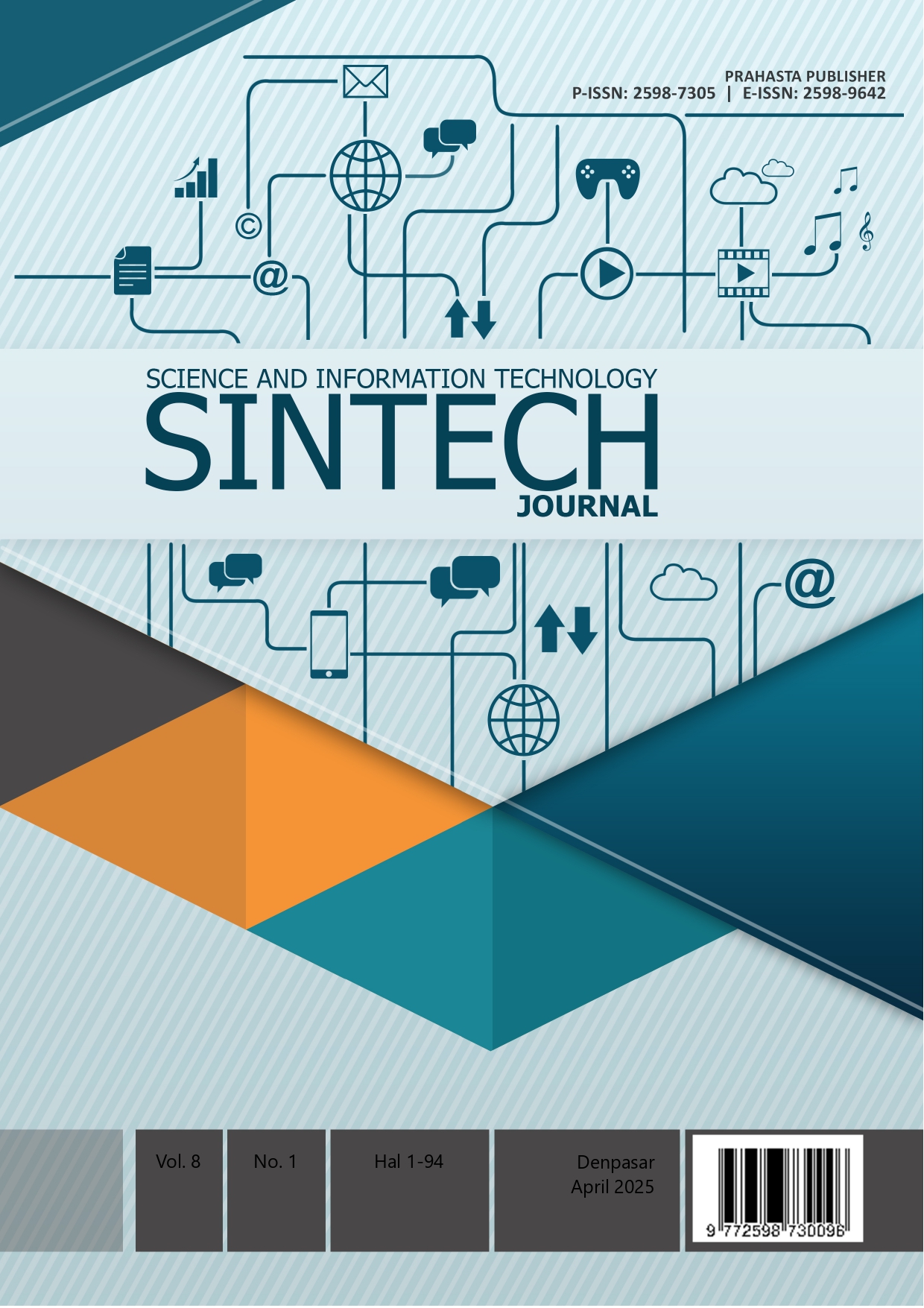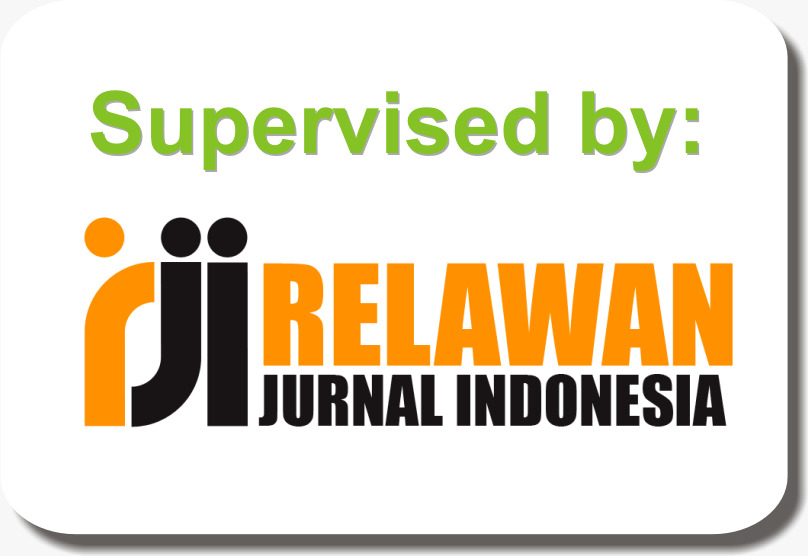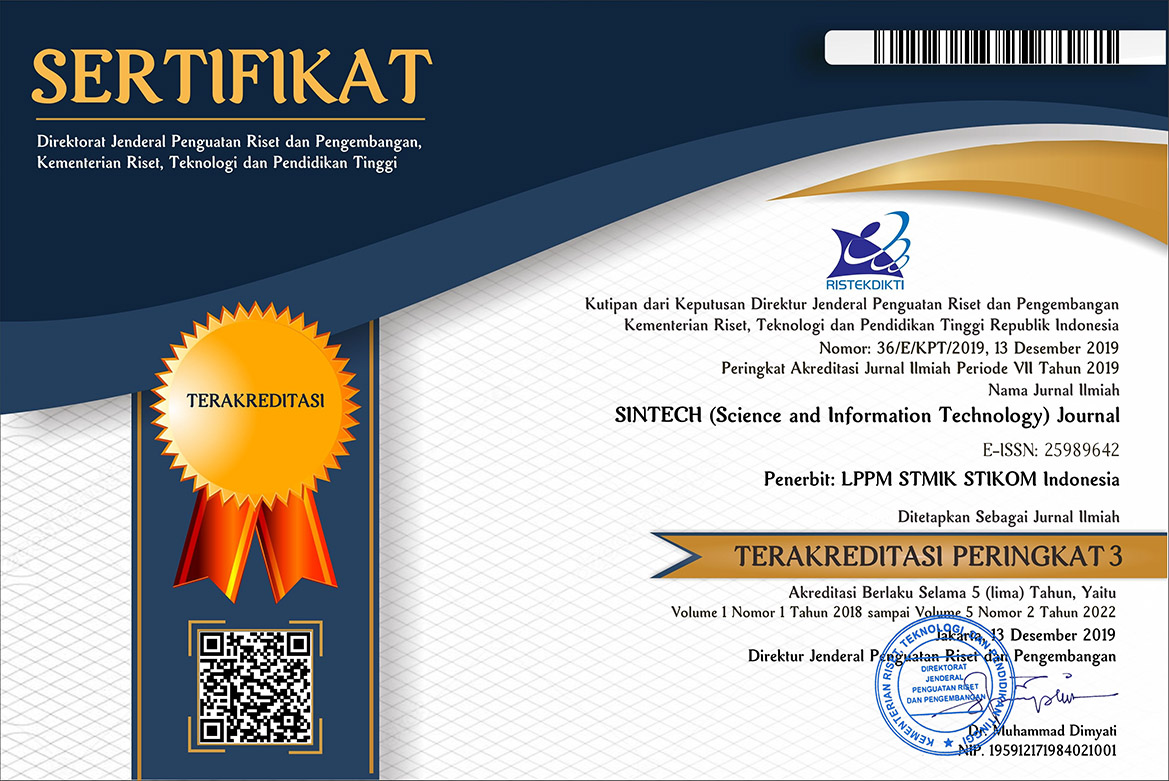Combining U-NET Segmentation and Dimensionality Reduction Methods For K-NN Fish Freshness Classification
DOI:
https://doi.org/10.31598/sintechjournal.v8i1.1793Keywords:
K-NN, PCA, 2DPCA, U-NET Segmentation, Fish FreshnessAbstract
Accurate identification of tongkol fish freshness is important for the fisheries industry to ensure product quality. Conventional methods such as organoleptic testing are still subjective and can damage samples, so an automated approach based on image processing is needed. This study developed a tongkol fish freshness classification system with a combination of U-NET segmentation, color feature extraction in HSV space, dimensionality reduction using PCA or 2DPCA, and classification with K-Nearest Neighbors (K-NN). The dataset consists of 64 images of fish heads from Kedonganan Beach, Badung, Bali, which were tested organoleptically. After segmenting the Fish Eye ROI using U-NET, augmentation was performed to increase the amount of data to 640 images. The model was tested with various k values (5, 15, 25, 35, 45) in K-NN, using Group K-Fold (k=8) and cumulative variance optimization (50%-95%). The results show that the combination of U-NET+2DPCA is more efficient than the combination of U-NET+PCA, with the highest validation accuracy of 96.88% and a computation time of 9.13 seconds at a variance of 55% and k = 25. This combination of methods offers an accurate and fast solution for automatically detecting fish freshness, support the fishing industry in maintaining product quality.
References
BPS, “Produksi Perikanan Tangkap di Laut Menurut Komoditas Utama (Ton), 2020-2021.” Accessed: Jun. 19, 2024. [Online]. Available: https://www.bps.go.id/id/statistics-table/2/MTUxNSMy/produksi-perikanan-tangkap-di-laut-menurut-komoditas-utama.html
R. A. Amaral et al., “Chemical-Based Methodologies to Extend the Shelf Life of Fresh Fish—A Review,” Foods, vol. 10, no. 10, p. 2300, Sep. 2021, doi: 10.3390/foods10102300.
X. Guo, S. Gu, and D. Wei, “Fish freshness evaluation based on MobileNetV1 and attention mechanism,” in Proceedings of the 2022 6th International Conference on Electronic Information Technology and Computer Engineering, New York, NY, USA: ACM, Oct. 2022, pp. 270–276. doi: 10.1145/3573428.3573475.
H. Mohammadi Lalabadi, M. Sadeghi, and S. A. Mireei, “Fish freshness categorization from eyes and gills color features using multi-class artificial neural network and support vector machines,” Aquac. Eng., vol. 90, no. October 2019, p. 102076, 2020, doi: 10.1016/j.aquaeng.2020.102076.
K. Takano, X. Lu, C. Yuan, and A. Kimura, “Freshness prediction for seafood using deep neural network,” in International Workshop on Advanced Imaging Technology (IWAIT) 2023, M. Nakajima, P. Y. Lau, J.-G. Kim, T. Yamasaki, K. Seo, J.-M. Guo, and Q. Kemao, Eds., SPIE, Mar. 2023, p. 58. doi: 10.1117/12.2666963.
Downloads
Published
How to Cite
Issue
Section
License
Copyright (c) 2025 I Putu Yudia Artana, I Made Dwi Putra Asana, Ni Nyoman Ayu J. Sastaparamitha, Ketut Jaya Atmaja, Made Leo Radhitya

This work is licensed under a Creative Commons Attribution-NonCommercial-ShareAlike 4.0 International License.











1.png)




